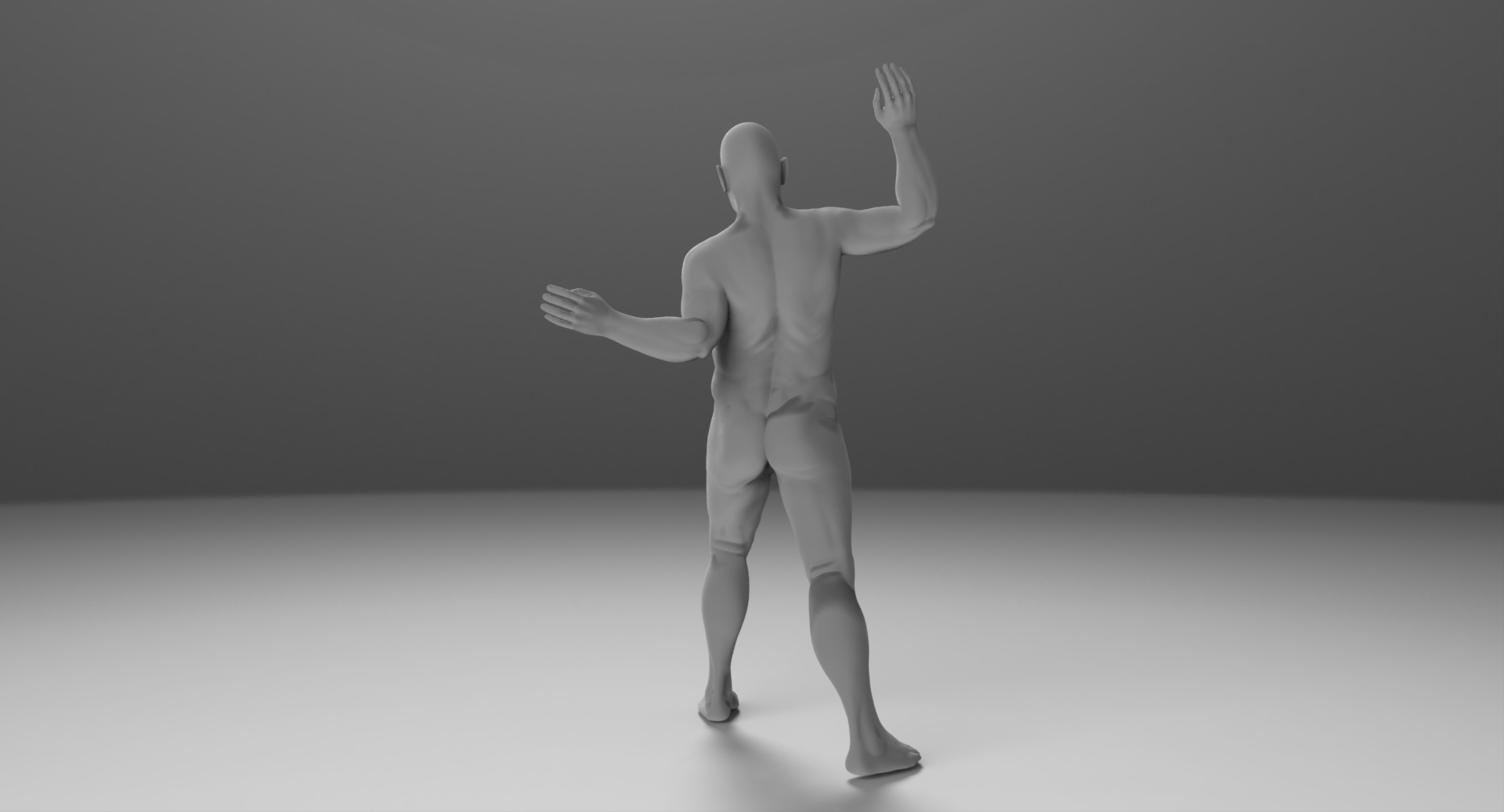Update to the old man study.




feedback would be appreciated.
Update to the old man study.




feedback would be appreciated.
First obese guy study.




Feedback would be appreciated (still a wip).
Update to the obese guy.




Little boy study.




Feedback would be appreciated.
Hi, I think the fat guy turned out nice. For the little kid, I think he’s way too build for his age:). Try smoothing out the forms, especially in the back area, the bum, biceps, maybe on the shoulders, overall smoother. Also, his thighs are too big, giving him a girly look. You should try using for inspiration Andrew Loomis proportion sheet, those are ideal proportions, but it gives you an idea on how to approach:

Hope this helps, good luck, you’re doing good! All the best
Hey nomad, yeah the thighs and the muscles are too pronounced; I’ll smooth, adjust them and move on to a new female study. Thanks for the feedback!
Third female study.
I like both materials;). I’ll actually try to pose this study and post more renders on her later (still a wip). Feedback would be appreciated.
Hey guys, here’s my second round of renders for my current female study.
Still getting used to posing, so I won’t be posting those just yet (need practice on that). Tips on posing and feedback would be appreciated.
As I found out myself after sculpting what seems to be a zillion static symmetrical posed models, was how posing was another challenge in itself, both technically, and anatomically and here is why.
First thing is finding the pose, and understanding the natural S curves that happen during the weight distribution that happens in life. How when we for instance put more weight on one foot, the opposite hip drops down, so the leg must be positioned accordingly. This then leads to the torso counter balancing, so the shoulders tilt in the opposite direction, same for head, and so on. This is a nice subject to read up on, but there is very little info about rhythms and gestures of the human form out there, this is why I went on Zack Petroc class last year for this subject, and am working on this in my current work as I speak, its on going. Of course your anatomical knowledge really starts to come into its own when dynamically posing your models, not only does the mesh get messed up bad with transpose, but you have to re think about the new forms that pose has produced anatomically.
It really comes down to getting down the anatomy first as you have been doing, then keep on studying the form in different poses, this is where ecorche drawing comes into play, it helps a great deal, try it. Get a pose off 3Dsk.com, and draw every muscle and bone you can over the top of it. If your looking at the form, and cant identify parts of it, then there is little merrit just sploging it on the model without understanding what it is, and why it looks that way, you wont convince anyone in doing this, but that what we all have to do when learning to fill the gaps.
Technically there are issues to overcome, first being if your model has a high polycount at its lowest level, this becomes a slow job, and causes bad deformation. Second thing is having a clean topology at the joints, this helps a great deal. I advice to work with stick men to start with, and try all types of poses, see how well you can balance them, or try some loose dynamesh sculpting on a pre posed figure. Learn how to use the transpose pose with the correct masking sharpness. Its a good idea to apply polygroups to aid in the process. There are many videos out there, but will be happy to make a quick intro to the posing methods in Zbrush, but im sure you have them down.
Remember in all of this, and this is what I say to anyone who is reading this, infomation is only one part to the process, the application of your knowledge is where you really get the benifit from it. Your female sculpt has realy come on, and I can see by next year your going to show allot of progress if you continue to work as hard, keep up the study, and work.
Hey danny, yes, as soon as I started posing this study asymmetrically, I realized just how challenging it was going to be (just as it is with sculpting anatomy). I’m gonna clean the topology more and practice again at a lower subdivision level and my mesh is already poly grouped. I started with a zsphere skeleton, the results were disappointing. Tried again with transpose master, same results. Still trying to decide which method of posing is better. Thanks for the tips, Danny!
I found that its best to pick a half T pose, fingers spread a little, polygouped, and work on the sculpt at the lower levels in symmetry for a while to get the pose down, tweaked, and sculpted, normaly within 3 levels, but always keep the realy low level for fast posing using transpose. Things that get most people is back muscles, anatomy of the knees, shoulders, and getting the correct ballance in the pose to show weight. Hands, often get left out, even although they are the second most expressive body part to the face. Even without dynamic poses, we can put allot into the sculpt in the gesture of the chest, hips, head, and hands, and the way the legs are holding that weight. Use the most simple mesh you can, and play with gestures, even if that mesh is not your own creation. As mentioned before im working of some projects now, and when ready I will post them, just like everyone here im learning, and making sure I keep doing so, keep going at it.
practicing simple poses.



This is harder than I expected even though it was just a simple pose. Hoping it gets easier as I keep practicing. Don’t hold back on the feedback, I know the pose looks bad.
<svg version=“1.1” baseProfile=“full” xmlns=“http://www.w3.org/2000/svg” style=“height: 0; width: 0; position: fixed”> <filter id=“bpm-darkle”> <feColorMatrix in=“SourceGraphic” type=“hueRotate” values=“180”></feColorMatrix> </filter> <filter id=“bpm-invert”> <feColorMatrix in=“SourceGraphic” type=“matrix” values=" -1 0 0 0 1 0 -1 0 0 1 0 0 -1 0 1 0 0 0 1 0"></feColorMatrix> </filter> </svg><svg version=“1.1” baseProfile=“full” xmlns=“http://www.w3.org/2000/svg” style=“height: 0; width: 0; position: fixed”> <filter id=“bpm-darkle”> <feColorMatrix in=“SourceGraphic” type=“hueRotate” values=“180”></feColorMatrix> </filter> <filter id=“bpm-invert”> <feColorMatrix in=“SourceGraphic” type=“matrix” values=" -1 0 0 0 1 0 -1 0 0 1 0 0 -1 0 1 0 0 0 1 0"></feColorMatrix> </filter> </svg><svg version=“1.1” baseProfile=“full” xmlns=“http://www.w3.org/2000/svg” style=“height: 0; width: 0; position: fixed”> <filter id=“bpm-darkle”> <feColorMatrix in=“SourceGraphic” type=“hueRotate” values=“180”></feColorMatrix> </filter> <filter id=“bpm-invert”> <feColorMatrix in=“SourceGraphic” type=“matrix” values=" -1 0 0 0 1 0 -1 0 0 1 0 0 -1 0 1 0 0 0 1 0"></feColorMatrix> </filter> </svg><svg version=“1.1” baseProfile=“full” xmlns=“http://www.w3.org/2000/svg” style=“height: 0; width: 0; position: fixed”> <filter id=“bpm-darkle”> <feColorMatrix in=“SourceGraphic” type=“hueRotate” values=“180”></feColorMatrix> </filter> <filter id=“bpm-invert”> <feColorMatrix in=“SourceGraphic” type=“matrix” values=" -1 0 0 0 1 0 -1 0 0 1 0 0 -1 0 1 0 0 0 1 0"></feColorMatrix> </filter> </svg><svg version=“1.1” baseProfile=“full” xmlns=“http://www.w3.org/2000/svg” style=“height: 0; width: 0; position: fixed”> <filter id=“bpm-darkle”> <feColorMatrix in=“SourceGraphic” type=“hueRotate” values=“180”></feColorMatrix> </filter> <filter id=“bpm-invert”> <feColorMatrix in=“SourceGraphic” type=“matrix” values=" -1 0 0 0 1 0 -1 0 0 1 0 0 -1 0 1 0 0 0 1 0"></feColorMatrix> </filter> </svg><svg version=“1.1” baseProfile=“full” xmlns=“http://www.w3.org/2000/svg” style=“height: 0; width: 0; position: fixed”> <filter id=“bpm-darkle”> <feColorMatrix in=“SourceGraphic” type=“hueRotate” values=“180”></feColorMatrix> </filter> <filter id=“bpm-invert”> <feColorMatrix in=“SourceGraphic” type=“matrix” values=" -1 0 0 0 1 0 -1 0 0 1 0 0 -1 0 1 0 0 0 1 0"></feColorMatrix> </filter> </svg>
I think it looks pretty good, though I’m not expert! I know sometimes it feels like everyone here is dizzyingly talented, but as your colleague, I’d still like to offer feedback.
Some of the shadows around the torso are a little strange. I really like the hands and ears, and the face is done very well. What are your methods for sculpting the nose and lip areas?
It’s a personal tweak, but some parts of the model seem overly-smooth. I’d bring out the elbows more (try looking into a mirror and seeing how your own is held down, it probably has a dimple or too) and the musculature in the legs.
It’s a bit of a saucy model but you can see what I mean exaggeratedly here: (it’s not nude, just provocatively posed) http://www.bennadel.com/resources/uploads/mavi_gioia_female_muscle_very_sexy.jpg especially with the muscles in the back of the knee and the side of the thigh.
One thing bothering me is that her breasts, going by the aureolae, are really far apart, almost pointing in separate directions. Some degree of seperation/drift is normal but i think it’s about 20 degrees too far outward.
Hi .
You certainly have allot of good things going on in the sculpt, and can see your progressing. She has a nice natural amount of volume in her legs, hips and soft tones. The shadows and lighting is not doing your work justice, so go and look at your settings. There are several things that need tweaking, but for now, she needs developing her shoulders more, keeping in mind she has the pectoralis major, deltoids, and a acromium process. At this time she has no olecranon, or at least not enough form the lateral epicondyle, and the ridge muscles, that dimple from the posterior view. It wouldn’t hurt to add a little hint of some major extensor muscles. You can do allot with a symmetrical model with just gesture, so if your finding its a challenge to pose, and keep up with still working on the model in general, you may want to back track to a more simple symmetrical pose. Thing to remember is when we stand on one leg, the opposite hip drops so the pelvis has a tilt. Start to look at real models and their silhouette, and compare yours.
Hey Buttercup, the strange shadows arround the back of the torso have to do with the lighting settings, as Danny pointed out, and me not adjusting the form when I posed the model. For the nose I just add the planes that make it up then smooth with a light touch and adjust it with the move or move top brush (after making a couple of noses, it’s straight forward). For the lips, I use the pinch to establish the lip’s border then I use dam standard to carve. The elbows looking the way they loo it’s 'cause I didn’t adjust after posing again. I’ll keep working on this (I’ll start a new study and do everything carefully). Thanks for the feedback!
Hey Danny, I’ll adjust the light and shadows settings, but it mainly looks like that because I didn’t rework the volumes much on the back after posing the model. As a result, some of the work done on the symmetrical pose was was basically spoiled. I’ll go back to the basics of the symmetrical pose and work it carefully (When it comes to mechanical/visual skills, I prefer to learn by doing instead of reading much… I can’t help myself). I appreciate all the information you’ve summarized for me (rest assured, I’ve read all your feedback carefully). Thanks for the feedback!
Hi there.
Im a visual learner myself, and nothing teaches better than applying what you have learnt. I have made myself read, as not all infomation can be seen in pictures without the explanation in detail. Human Anatomy For Artist by Eliot Goldfinger is such a book that with a little reading realy helps connect things together, and makes you take notice the names, and positions. Id say that book is a must, I highly recomend it.
As for posing, im certainly no expert, but as you said allot of what you sculpt does get lost when you pose, this is why I dont spend too long in the symmetrical stage going into higher details, but just get general masses and volumes in place, then pose to start the sculpt. Another advantage in working this way is that you dont get caught up in details, but rather you start realy looking at the pose, and how the character has is weight and ballance distributed. Things to look for are the pelvis tilt, shoulders tilt, S curves in the forms e.c.t.
Keep it up.
Complex pose. So I decided to pose one of my old studies with a now famous pose. I’m finally getting comfortable doing this.
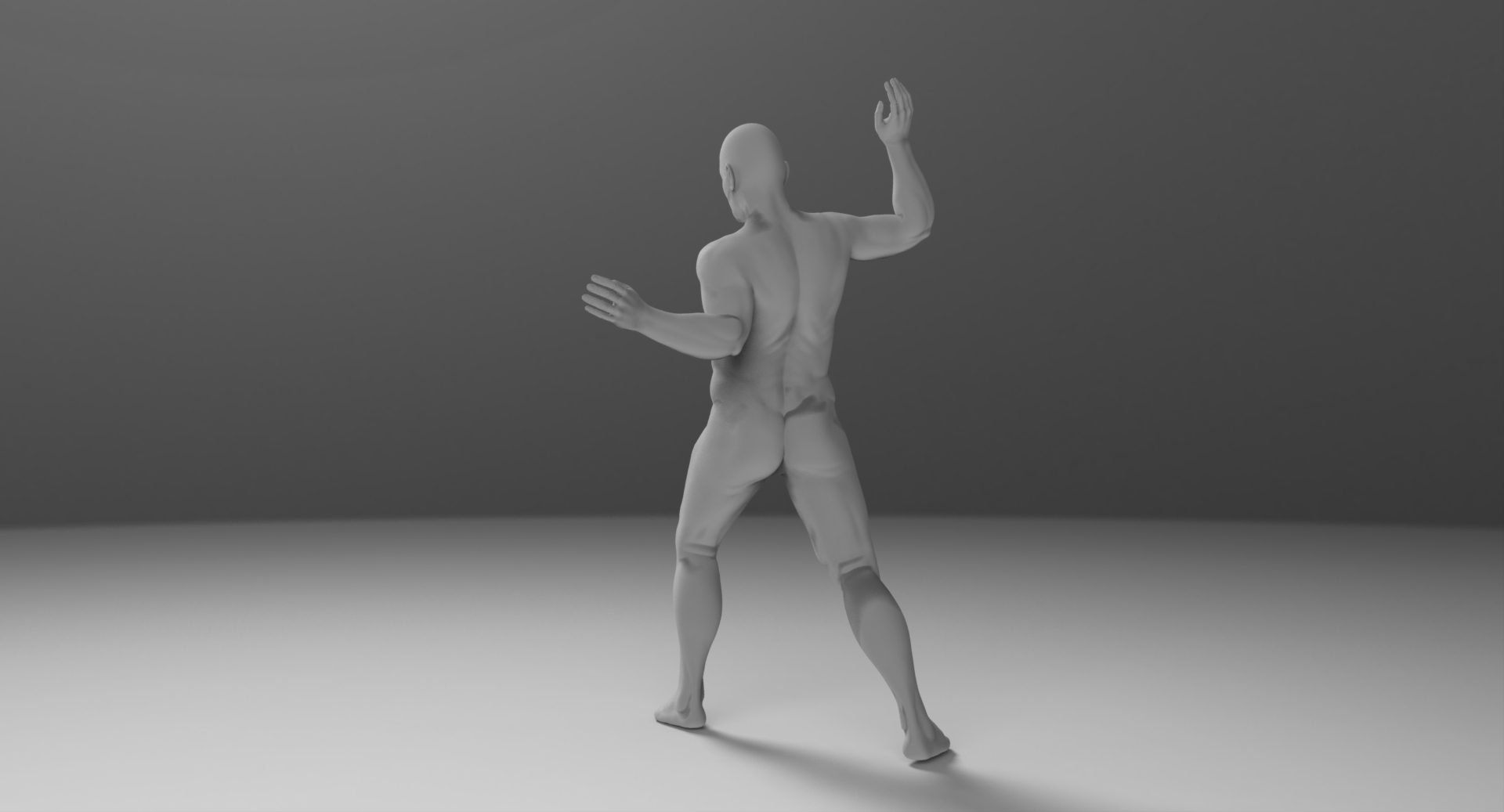
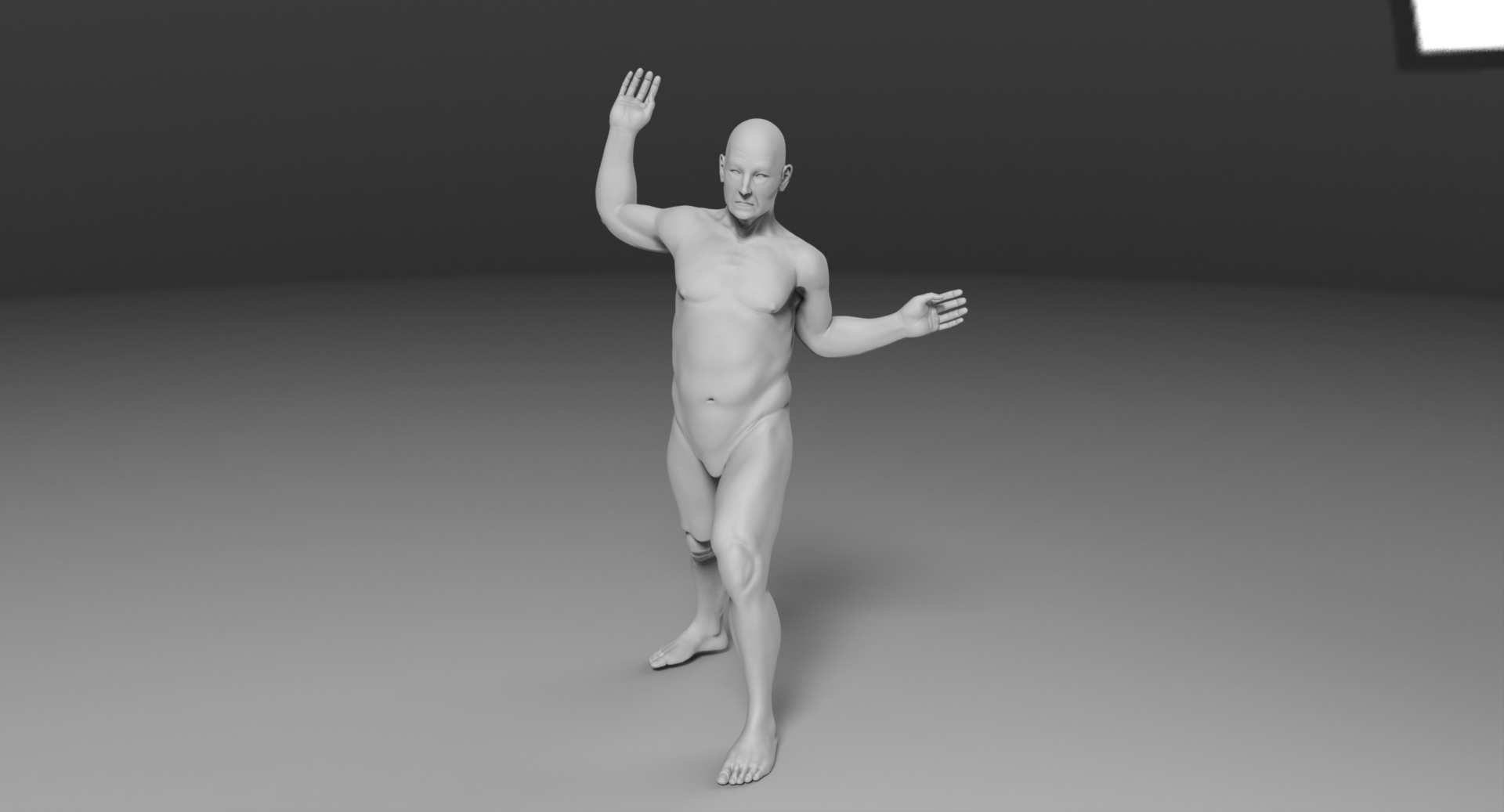
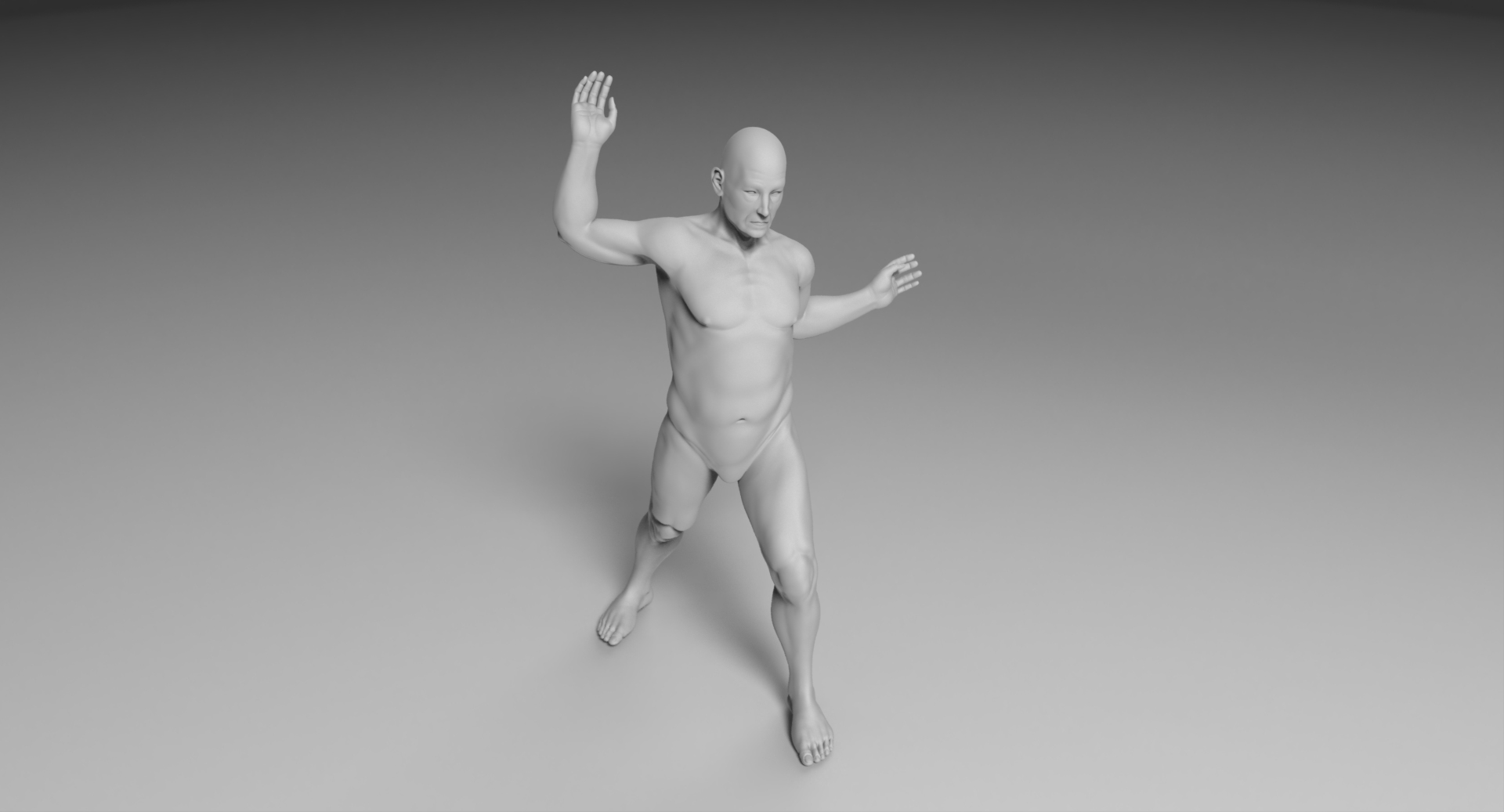
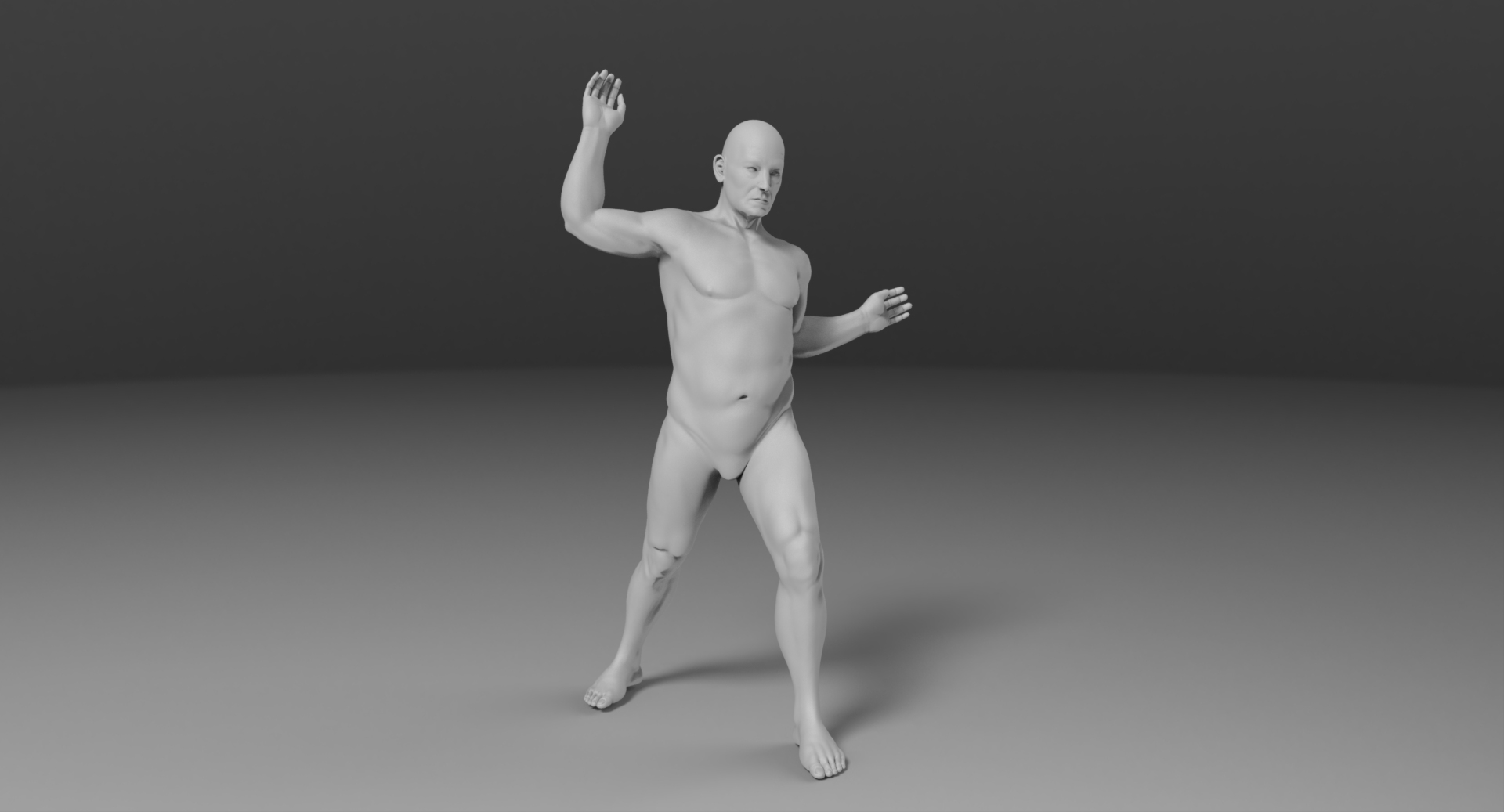
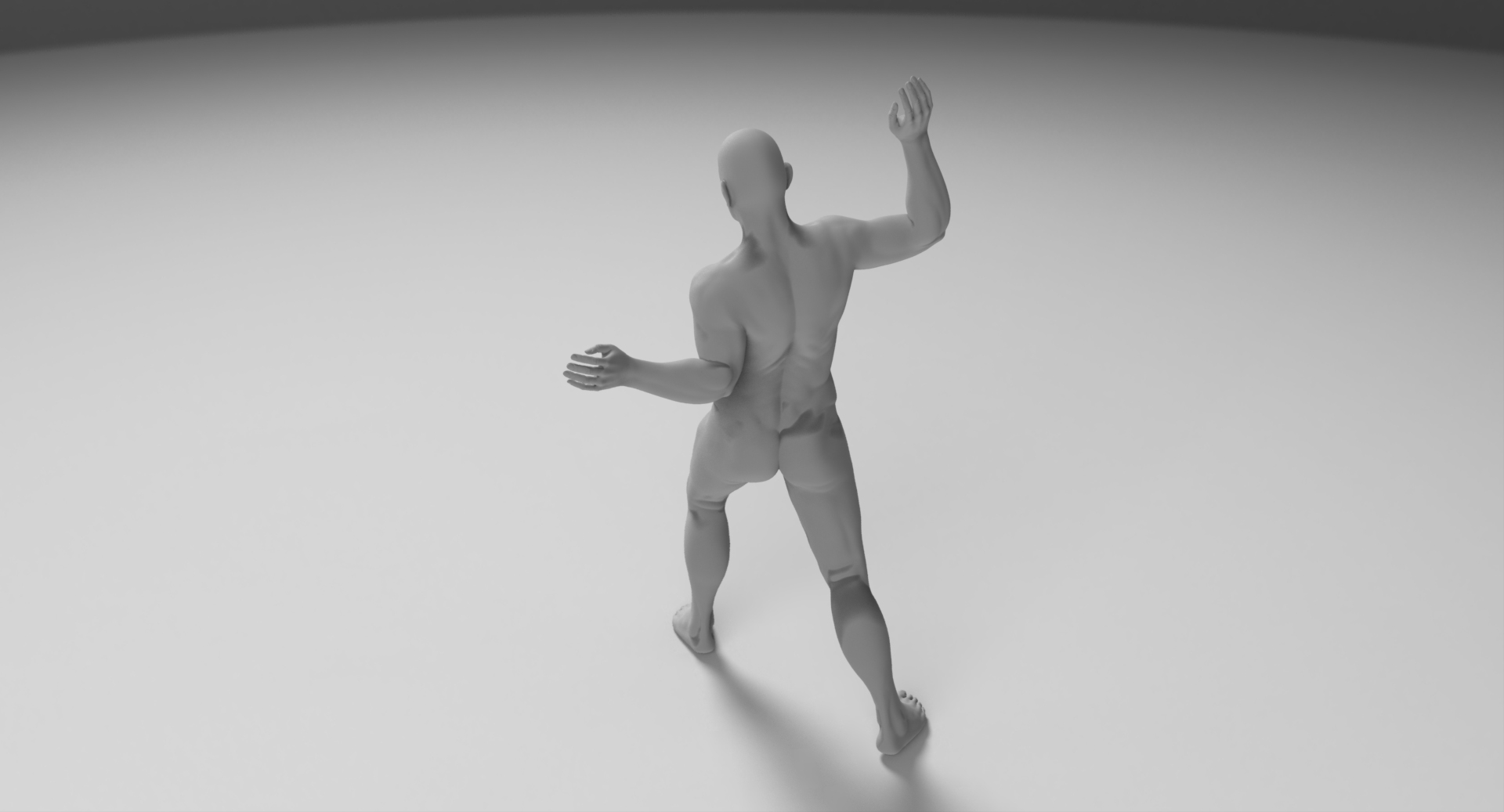
Feedback would be appreciated.
